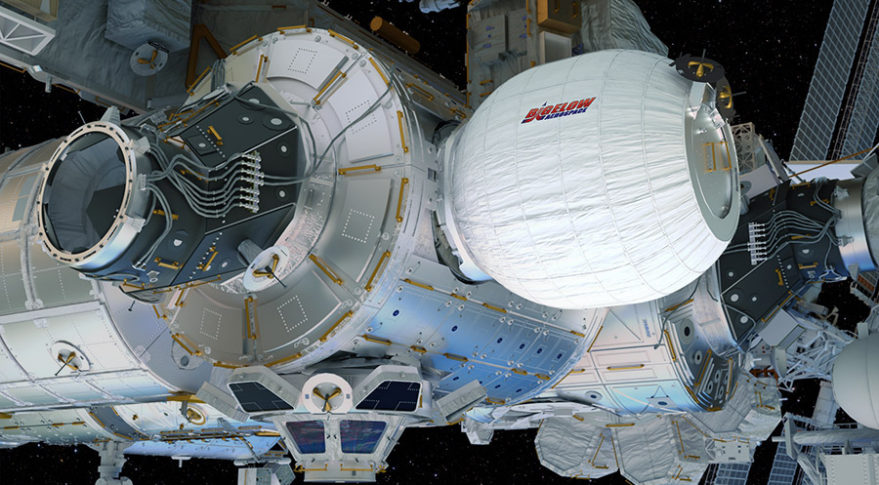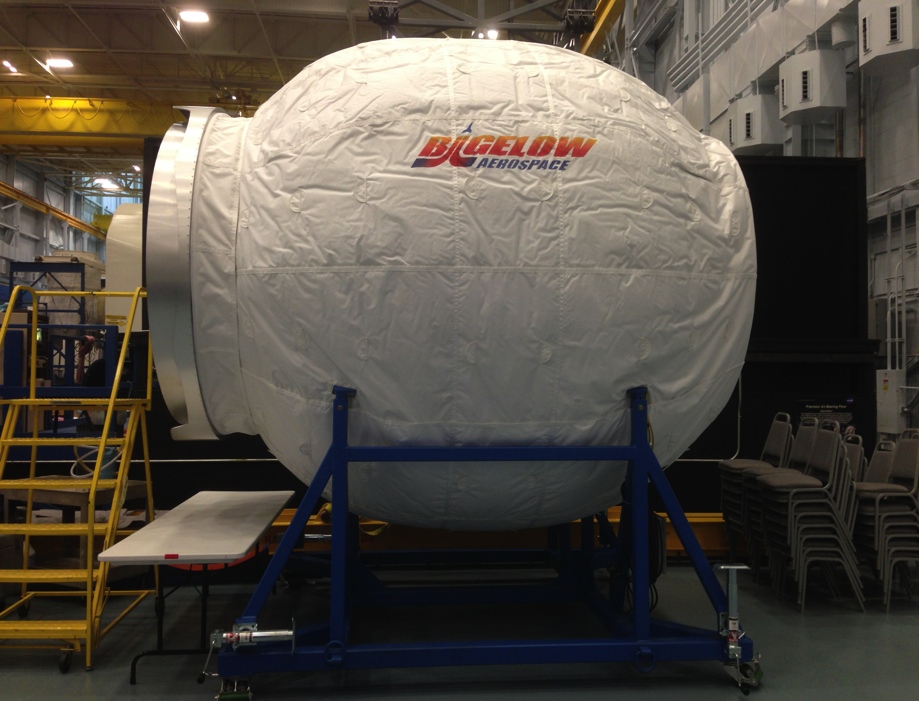NASA extends contract with developer of inflatable modules for ISS

Module Bigelow Expandable Activity Module connected to the station body in the expanded state. Source: NASA / Bigelow
Last year, in May, astronauts on the ISS were able to successfully deploy an inflatable BEAM (Bigelow Expandable Activity Module) company from Bigelow Aerospace. Before that, however, there were problems - the module did not want to inflate. But the reasons were not too critical (summed up by automation, which did not recognize the cutting of the tapes that kept the module case in the folded state), and the problem was solved. Inflatable modules in the unfolded state reach a volume of 16 cubic meters with a diameter of 3.2 meters.
Advantages of such systems are called a small volume in the folded state, which facilitates the task of putting the module into orbit. The mass of BEAM is 1360 kg, while the mass of the aluminum Unity module, which is currently used on the ISS - 11793 kg, is almost ten times more. After a series of checks, the engineers at NASA were satisfied with the results, and the agency itself expands the contract with the module manufacturer.
Unfortunately, the value of the contract is not indicated, but it will be valid for three years with the possibility of extension for another year.
')
The Agency decided to continue cooperation, since it remained satisfied with the state of the deployed module more than a year after its delivery to the ISS. "BEAM continues to work normally, his condition is quite satisfactory, the study showed that modules of this type can be on the ISS for a long time as a warehouse or to demonstrate various technologies," the agency said.
However, now the agency representatives clarified that the inflatable modules will be used only as a warehouse for equipment, residential sectors of the BEAM is not planned to create. The module, which is now in orbit, remains to work for about a year. After two years, it will be collected and dumped into the atmosphere of the Earth, where it will burn. Probably two years - the planned life of such modules.
Specifications are as follows:
- Length. Coiled - 2.16 m, puffed - 4.01 m;
- Diameter. Coiled - 2.36 m. Inflated - 3.23 m
- Weight - 1400 kg;
- Volume - 16 m3.
It is worth noting that NASA has standard cargo containers called Cargo Transfer Bags (about half a cubic meter). The module can fit about 100 such objects, which will free up the usable space of other modules in which the cargo is currently located.
BEAM is only a working model of larger inflatable modules developed by Bigelow Aerospace, based in Las Vegas, USA. Earlier, company representatives said that full-scale B330 modules (two are planned to be manufactured in total) will be ready by 2020. The volume of each is 330 cubic meters, so they were called so - B330.

Most likely, one of the modules will be installed in the same place where the test model is now located. The docking station in question, NASA proposes to use to connect commercial third-party modules. True, the plan for the commercial use of the site is not yet ready.
On the other hand, there are those who want to enter into a partnership with the agency to test their own developments. First of all, it is Axiom Space and Ixion, a joint venture of NanoRacks, Space Systems Loral and the United Launch Alliance.
Source: https://habr.com/ru/post/373869/
All Articles